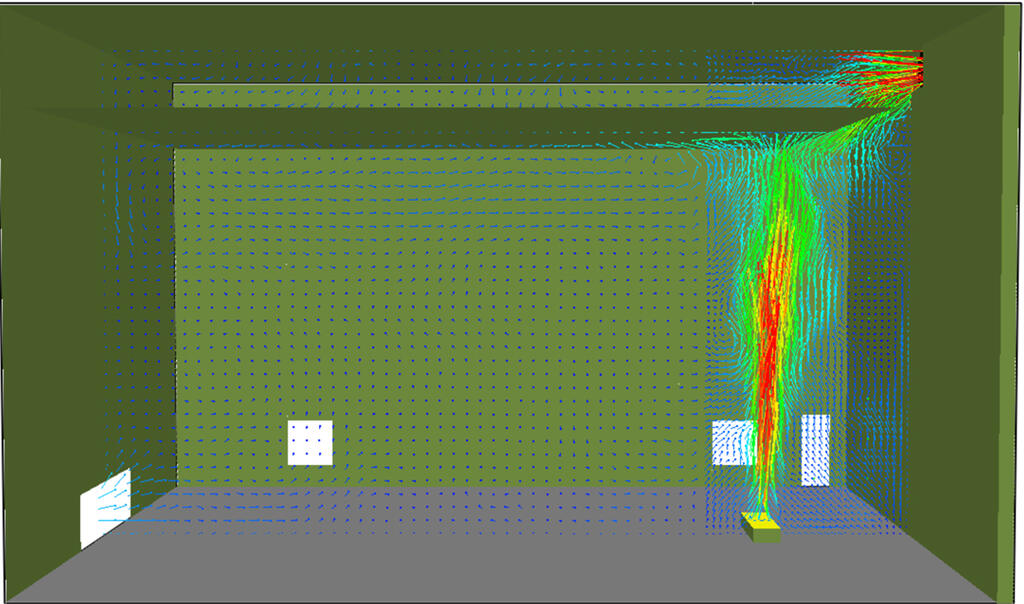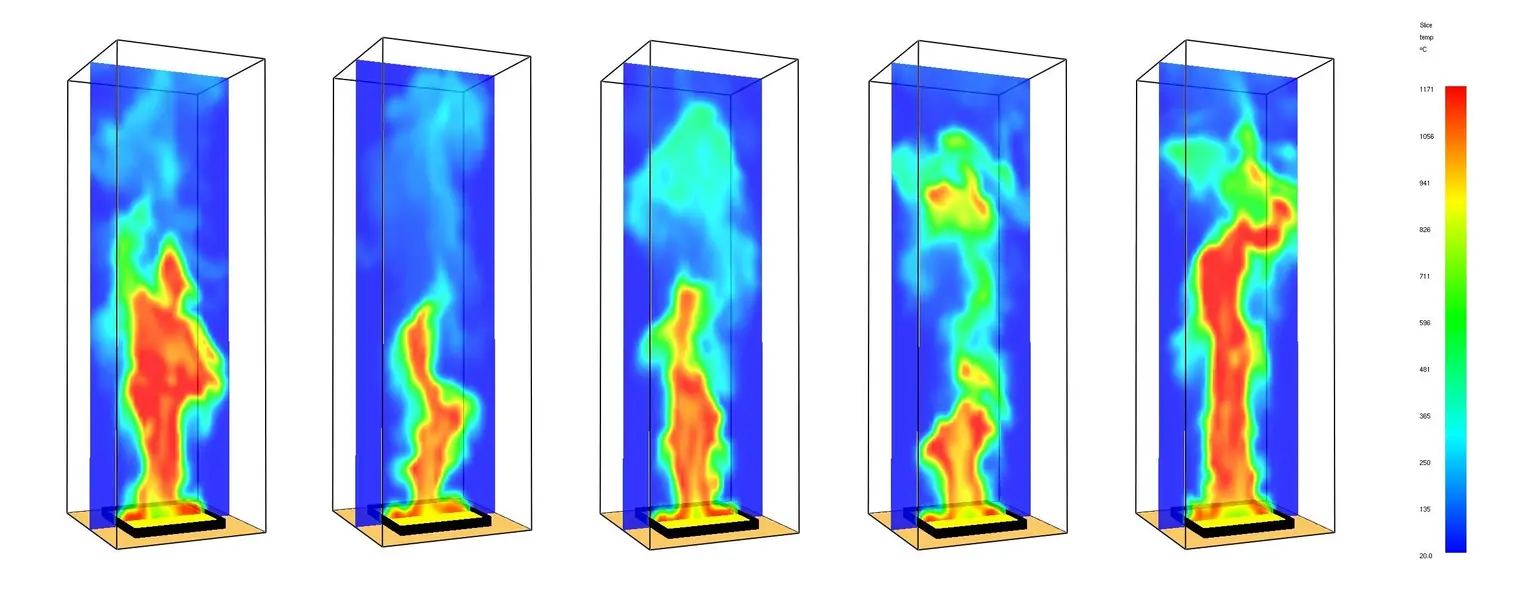Southwest Research Institute has a long history of providing engineering evaluations of fire through fire testing, modeling, and research for a wide range of government clients.
SwRI’s Fire Technology Department also has extensive experience in computer-based fire modeling and a collaborative relationship with the Center for Nuclear Waste Regulatory Analysis allows the Institute to offer creative and efficient solutions to the most challenging fire protection and safety problems.
Computational Fluid Dynamics
With faster processors and better numerical techniques, computational fluid dynamics (CFD) tools have revolutionized engineering design and optimization, limiting expensive experimentation and providing virtual solutions with short turnaround times. Today, CFD is used extensively to analyze a wide variety of applications, from aircraft wing design to sportswear manufacturing to fire modeling. CFD-based fire modeling is based on mathematical descriptions of fire dynamics and chemistry in a form suitable for computer-based solution. In certain situations, computer simulation of fire scenarios becomes much more beneficial where repeated testing becomes expensive.
Computer-based fire modeling can be applied to:
- Effects of compartment fires on people and structures using zone models and computational fluid dynamics (CFD) codes
- Rate of flame spread over solid surfaces and pyrolysis modeling
- Simulation of flashover
- Pool fire and fire-whirl modeling
- Performance of loaded structures exposed in fully developed fires of varying severity
- Analyze Damaging effects of high-energy arcing faults (HEAF)
- Fire suppression modeling
- Modeling of tunnel fires
- Fire dynamics simulations for LNG tanks and pressure vessels
SwRI’s Fire Technology Department has computational facilities and software specifically dedicated to fire modeling, including:
- Fire Dynamics Simulator (FDS)
- CFAST
- BRANZFIRE
- B-Risk
- COMSOL-ACDC
- COMSOL-CFD
- COMSOL-Chemical Reaction Engineering
- COMSOL-Heat Transfer
- COMSOL-Structural Mechanics
- COMSOL-Multiphysics
- Dell Powerhouse T640 Server with Intel Xeon Gold
High-Energy Arcing Fault Fire Modeling

Fire Dynamics Simulator calculations to evaluate efficacy of smoke extraction system.
We also have the unique capability to perform high-energy arcing fault (HEAF) fire modeling using a CFD-based tool to determine the zone of influence of a HEAF for different types of high-energy electrical cabinets. A HEAF can occur in an electrical system or component through an arc path to ground or lower voltage, if sufficiently high voltage is present at a conductor with the capacity to release a high amount of energy in an extremely short time. A HEAF event initiates with an arc that heats and ionizes the surrounding gases at several thousand degrees Celsius, making it electrically conductive, and the temperature increases further as a result of self-heating induced by the current.
HEAFs can pose a fire risk to nuclear power plants as the energy input from the arc to the air leads to a sudden pressure rise followed by a release of hot gases, creating a hazard for the surrounding equipment and nearby operators. Simulation of the HEAF phenomenon involves modeling the plasma-state gas as well as thermofluid analysis.
For each of the modeling and simulations, we provide validated computational results as well as state-of-the art uncertainty analysis.
This video shows a diesel pool fire and associated flame structure. This simulation was carried out using computational fluid dynamics.
For questions about fire modeling, please contact Debashis Basu at +1 210 522 8333 or Marc Janssens at +1 210 522 6655.

